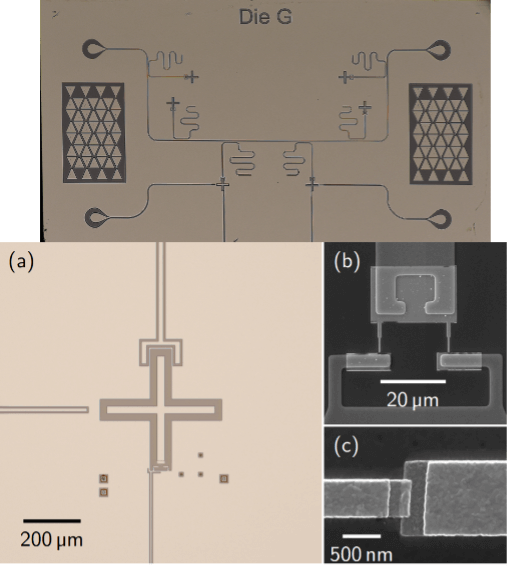Quantum neuromorphic computing (QNC) is a novel method that combines quantum computing with brain-inspired neuromorphic computing. Neuromorphic computing performs computations using a complex ensemble of artificial neurons and synapses (i.e., electrical circuits) to emulate the human brain. QNC may lead to a quantum advantage by realizing these components with quantum memory elements, or memelements, which can store and process quantum information within the same device. This research aims to achieve experimental realization of superconducting quantum memelements, which has never been done before. A quantum memcapacitor will be fabricated by depositing and patterning thin aluminum films, and then cooling to cryogenic temperatures to unveil quantum-mechanical properties in highly nonlinear regimes. The success of the device will be demonstrated by measuring a characteristic Lissajous curve with a pinched hysteresis, which is a hallmark of a memelement. A variety of memcapacitor regimes will then be investigated, including two-photon memcapacitive processes, loss and temperature effects. Finally, entanglement between two quantum memcapacitors will be shown theoretically and experimentally, paving the way toward an actual QNC. QNC will lead to new knowledge on quantum technologies by helping develop improved fabrication and quantum machine learning techniques inspired by the brain. Further, investigating the quantum mechanical properties of quantum memelements acting as artificial neurons in dissipative environments may provide further insight into the working principles of the human brain.

Figure 1. Optical images of a typical superconducting quantum device similar to the one investigated in this project.
Related Content

On-Chip Microwave-Optical Quantum Interface
Summary In this project we develop a quantum interface between microwave and optical photons as a key enabling technology of a hybrid quantum network. In such a network, the robust optical photons carry quantum information through optical fibres over long distances, while superconducting microwave circuits protected from thermal photon noise by the low temperature […]
October 29, 2018

Quantum Computational Resources in the Presence of Symmetry
Summary Fault-tolerance is essential to the performance of quantum technologies, but known schemes are extremely resource intensive. Thus, improving existing schemes or inventing new schemes is of central importance. This joint project is based on the realization that fault-tolerance schemes make use of symmetries in fundamental ways, and that studying the problem of fault tolerance […]
March 13, 2019

Quantum Simulations of Fundamental Interactions
Summary To address questions in modern physics such as “what is the structure of matter inside neutron stars?” we need better computational methods to evaluate the interplay of fundamental forces between elementary particles. To-date the response to such questions rests on numerical computer simulations that are inherently limited. In this project, we develop new theoretical […]
April 18, 2019
Advanced microwave electronics enabling quantum technologies
Summary Superconducting quantum computers require quantum-limited measurements at microwave frequencies in order to implement error correction. Conventionally, this is accomplished using near quantum-limited Josephson Parametric Amplifiers (JPAs). The JPAs require bulky ferrite-based circulators that prevent on-chip integration of the amplifiers with the processor and take up the majority of space and cooling power in the […]
April 1, 2020

